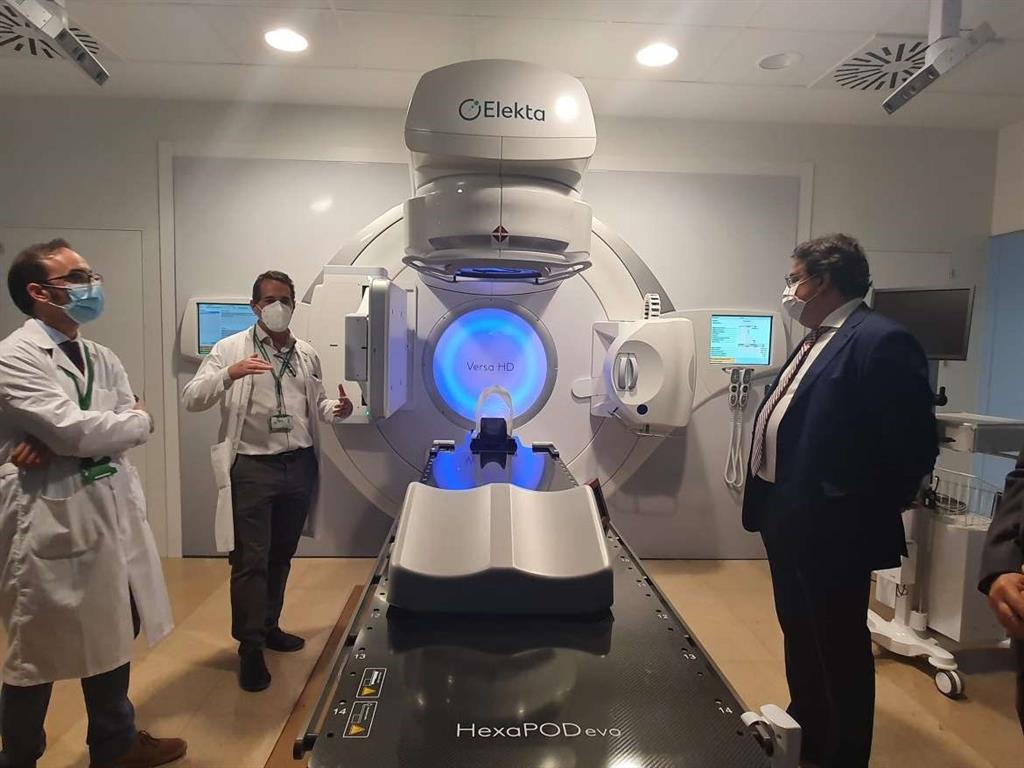CÁCERES, May 29. (EUROPA PRESS) –
The second vice president and counselor for Health and Social Services, José María Vergeles, visited the radiotherapy oncology service of the Cáceres University Hospital this Saturday where the new linear accelerator donated by the Amancio Ortega foundation is installed.
José María Vergeles explained that it is a “cutting edge radiation oncology service with a cutting edge accelerator”. The total investment was 5.6 million euros, including the linear accelerator, which amounted to 3.6 million; one million for the work of the double bunker or just over 800,000 euros for the CT Simulator or intraoperative radiotherapy.
The regional Executive highlights the “leap in quality” provided in the treatments that began to be carried out on May 25, attending four patients. Image-guided radiotherapy techniques are used to locate the tumor with high precision, indicates the Executive in a press release.
In this way, treatments with cutting-edge techniques such as volumetric radiotherapy and intensity-modulated radiotherapy will be provided, the most advanced patient positioning systems on the market are available.
As the counselor explained, the accelerator allows radiotherapy techniques to be carried out “very precise and with little radiation, so it is safer for both the patient and the professionals.”
Vergeles has continued to explain that “due to the movement of the patient on a stretcher and the three-dimensionality of the lesion, it is possible to calculate the exact doses to protect the good tissue. In the future it will allow radiosurgery techniques”.
The linear accelerator is the vertex on which the activity in radiation oncology will be generated in Cáceres, but it is not the only work team, since breast cancer treatments have been performed with the intraoperative radiotherapy technique for more than a year with a portable equipment and its use for gynecological, superficial treatments …
This equipment makes it possible to reduce the time required for some treatments since it is performed in the surgical act itself or in a few sessions performed in the CT-simulator room. Patients are treated in a more comfortable way, treatment time and travel are reduced and, on the other hand, it frees up time from the accelerator, something that is very necessary to be able to perform the most complex treatments.
“It is therefore about modern facilities that facilitate a lot of accessibility with large areas and adequate infrastructures”, he pointed out.
The Minister of Health has referred to the hospital radiophysics service, ensuring that it has the latest laboratory facilities to simulate radiation. It is important to give security to the treatment. It is therefore a “very important investment that allows many possibilities in the treatment of the patient, equipped with the latest means to perform simulations.
It is a very little known service, but it is very important to provide safety in radiotherapy treatments to patients “.
COMPLAINT FILE EUROPEAN UNION
José María Vergeles explained that the facilities of the University Hospital “are no longer in danger.” As explained by a “citizen” of the region, he filed a claim with the European Union petition commission “putting at risk more than 40 million of the treasury of the autonomous community of Extremadura.”
Vergeles has said that the complainant raised in the European Union that the ERDF funds had not been invested in the Cáceres hospital. This complaint has been archived. “The European Union has given the reason to Extremadura, it has not given the reason to Mr. Corchero, the complainant, and the former minister Dolors Montserrat, because this government has” shown up to four times that the money was allocated to this hospital ” .
–


